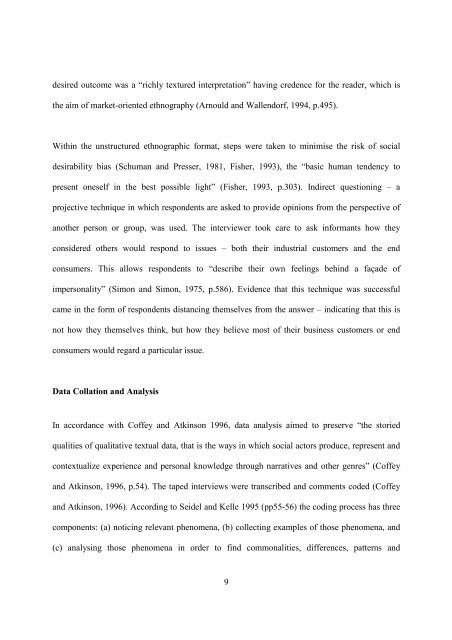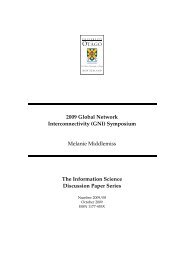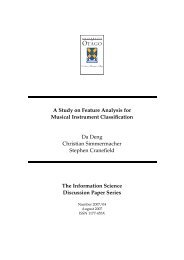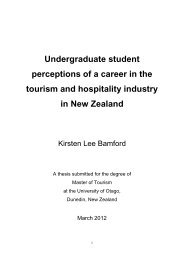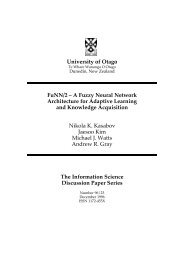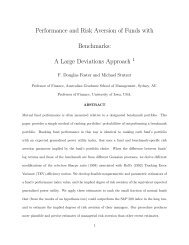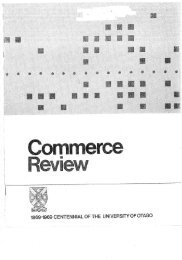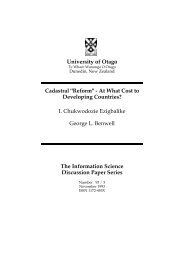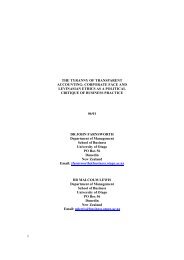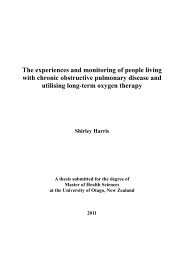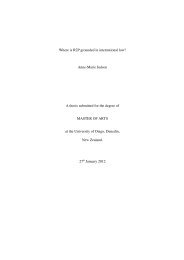Determinants of Trust in Imported Food Products - Otago University ...
Determinants of Trust in Imported Food Products - Otago University ...
Determinants of Trust in Imported Food Products - Otago University ...
Create successful ePaper yourself
Turn your PDF publications into a flip-book with our unique Google optimized e-Paper software.
desired outcome was a “richly textured <strong>in</strong>terpretation” hav<strong>in</strong>g credence for the reader, which isthe aim <strong>of</strong> market-oriented ethnography (Arnould and Wallendorf, 1994, p.495).With<strong>in</strong> the unstructured ethnographic format, steps were taken to m<strong>in</strong>imise the risk <strong>of</strong> socialdesirability bias (Schuman and Presser, 1981, Fisher, 1993), the “basic human tendency topresent oneself <strong>in</strong> the best possible light” (Fisher, 1993, p.303). Indirect question<strong>in</strong>g – aprojective technique <strong>in</strong> which respondents are asked to provide op<strong>in</strong>ions from the perspective <strong>of</strong>another person or group, was used. The <strong>in</strong>terviewer took care to ask <strong>in</strong>formants how theyconsidered others would respond to issues – both their <strong>in</strong>dustrial customers and the endconsumers. This allows respondents to “describe their own feel<strong>in</strong>gs beh<strong>in</strong>d a façade <strong>of</strong>impersonality” (Simon and Simon, 1975, p.586). Evidence that this technique was successfulcame <strong>in</strong> the form <strong>of</strong> respondents distanc<strong>in</strong>g themselves from the answer – <strong>in</strong>dicat<strong>in</strong>g that this isnot how they themselves th<strong>in</strong>k, but how they believe most <strong>of</strong> their bus<strong>in</strong>ess customers or endconsumers would regard a particular issue.Data Collation and AnalysisIn accordance with C<strong>of</strong>fey and Atk<strong>in</strong>son 1996, data analysis aimed to preserve “the storiedqualities <strong>of</strong> qualitative textual data, that is the ways <strong>in</strong> which social actors produce, represent andcontextualize experience and personal knowledge through narratives and other genres” (C<strong>of</strong>feyand Atk<strong>in</strong>son, 1996, p.54). The taped <strong>in</strong>terviews were transcribed and comments coded (C<strong>of</strong>feyand Atk<strong>in</strong>son, 1996). Accord<strong>in</strong>g to Seidel and Kelle 1995 (pp55-56) the cod<strong>in</strong>g process has threecomponents: (a) notic<strong>in</strong>g relevant phenomena, (b) collect<strong>in</strong>g examples <strong>of</strong> those phenomena, and(c) analys<strong>in</strong>g those phenomena <strong>in</strong> order to f<strong>in</strong>d commonalities, differences, patterns and9


